These Cosmic Visions Include a Mars Ocean and a Supernova Quartet
The red planet’s deep blue sea and a rare Einstein cross feature among the week’s best space images
An astronaut gets cozy during spaceflight practice, signs of an ancient ocean appear on Mars, Hubble captures an explosive quartet created by relativity and more in our picks for the week's best space images.
.
.
Tight Fit
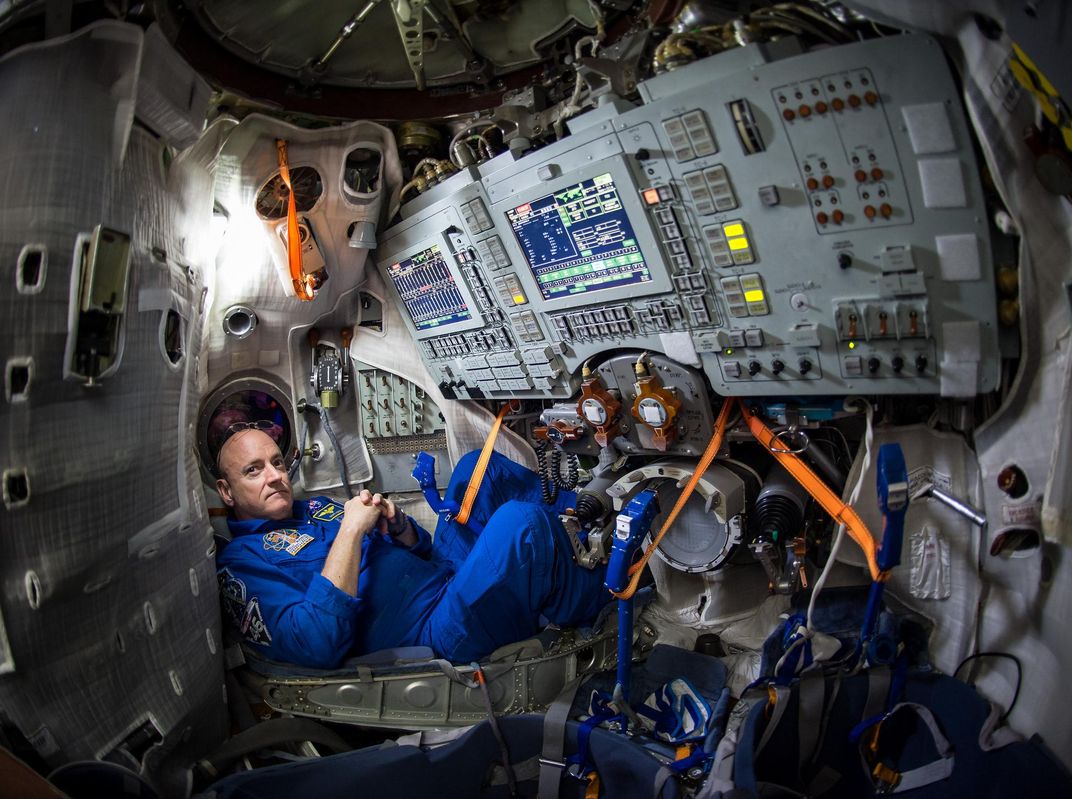
NASA astronaut Scott Kelly gets ready for his next mission by practicing inside a Soyuz simulator at the Gagarin Cosmonaut Training Center in Star City, Russia. Kelly is slated to lift off for the International Space Station (ISS) on March 28. He and crewmate Mikhail Kornienko of the Russian Federal Space Agency will be the first astronauts to spend a full year aboard the ISS. Their stint will contribute to biomedical research into long-term space travel, including a study that will use Scott's twin brother Mark as an earthbound control.
Ocean on Mars
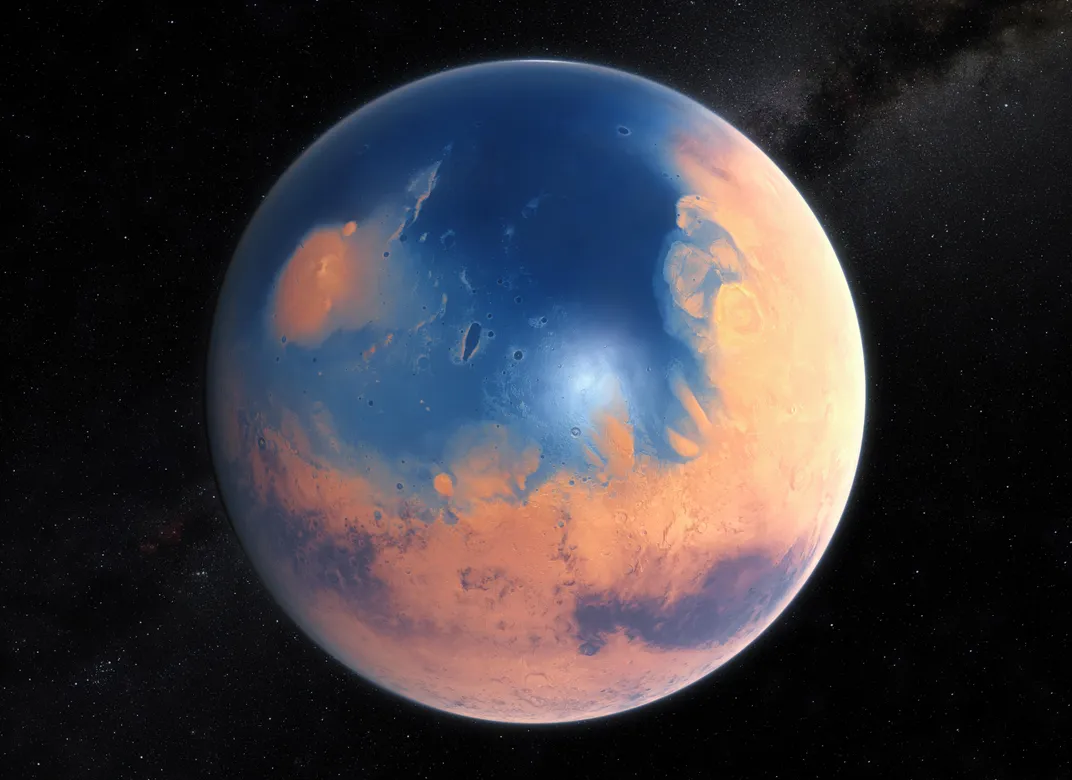
When Mars was young, its northern hemisphere would have been covered by an ocean bigger than the Atlantic, according to research from an international team that studied the different forms of water in the red planet's modern atmosphere. Using telescopes in Chile and Hawaii, scientists examined the ratio of regular H2O to HDO, a molecule where one of the hydrogen atoms has been replaced by a heavier version of hydrogen called deuterium. This let them calculate the rate at which water has been escaping into space over the course of Mars's lifetime. Working backward, the team estimates that Mars had a vast ocean about 4 billion years ago, like the one seen in this artist's conception.
Iron Rain
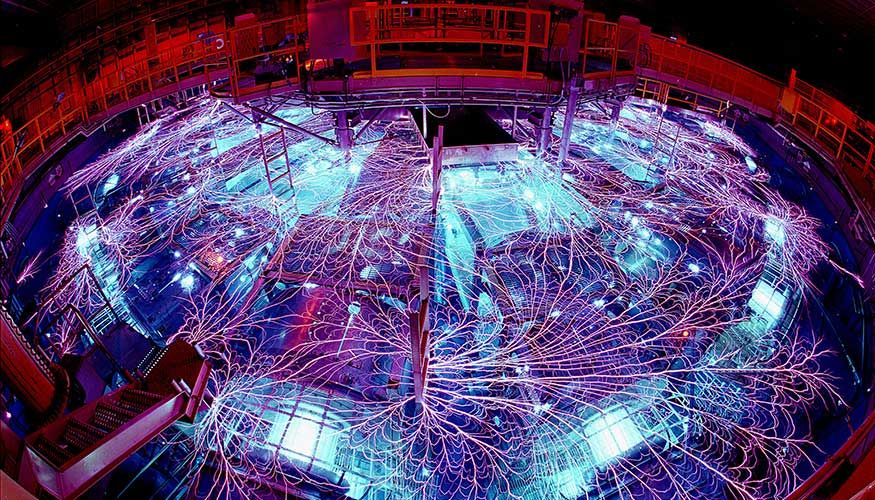
The collisions that helped Earth grow also put the infant planet awash in iron rain. That's the conclusion from scientists who used the Sandia National Laboratory’s Z-Machine, seen above, to measure the impact speeds needed to vaporize iron. They found that iron will turn into vapor at much lower speeds than previously thought, which changes our picture of how Earth formed its dense iron core. According to the new model, multiple smaller bodies smashed into Earth when it was forming, and the iron in them turned into a vast vapor plume that spread around the planet. That vapor then cooled and condensed into iron rain, which sunk into the still molten mantle and coalesced into a core in the center.
African Migration
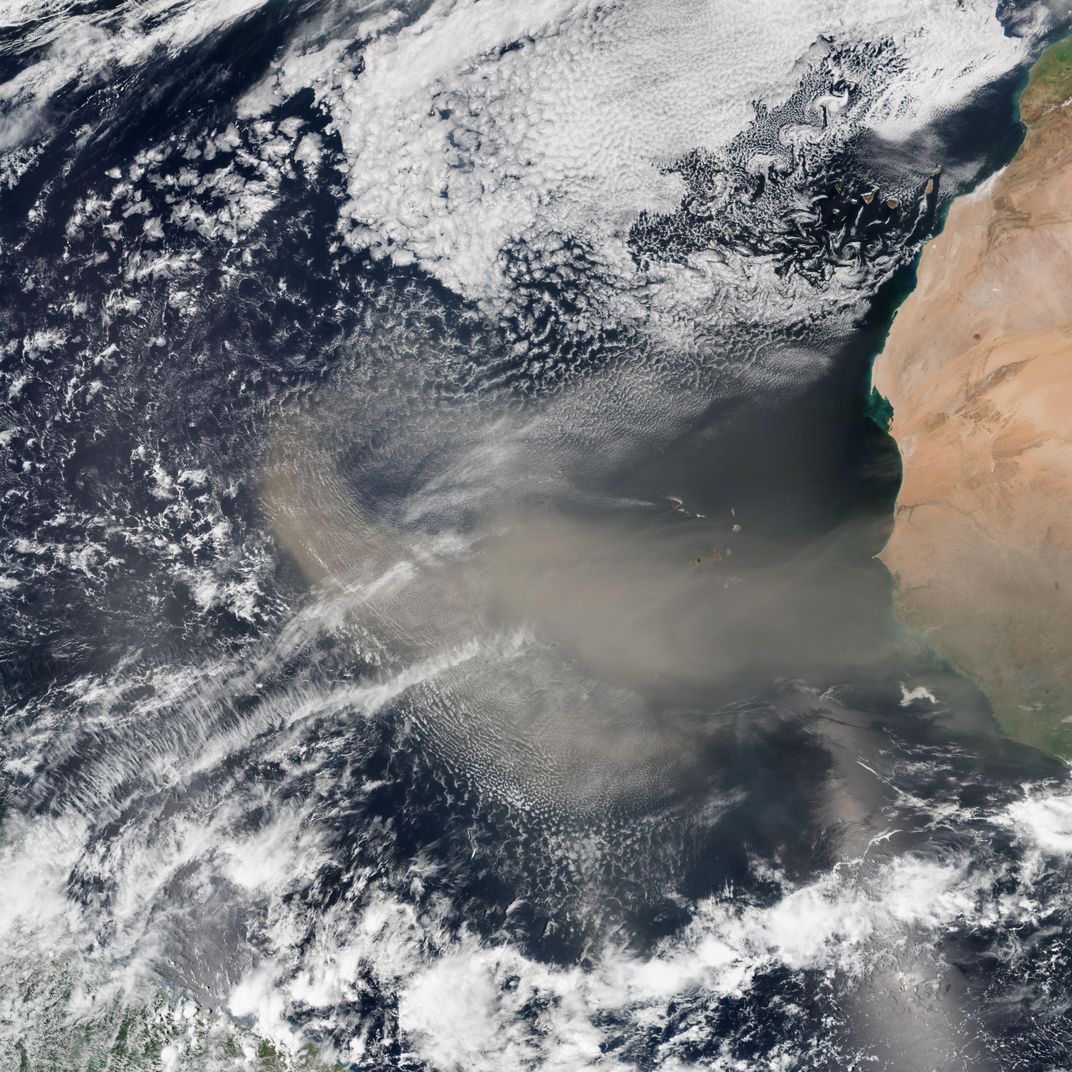
In late February, a string of satellites watched as a huge plume of dust blew out of northern Africa and spread across the Atlantic. This recently released image from Suomi NPP shows the dust plume reaching halfway to South America, tugged along the way by the volcanic peaks of the Cabo Verde islands. The transcontinental journey of desert dust is vitally important for the Amazon rainforest, which depends on the sandy minerals to replenish nutrients such as phosphorus in the region's otherwise depleted soils. A recent paper based on satellite images calculates that African dust carries about 22,000 tons of phosphorus a year to the rainforest.
Supernova Quartet
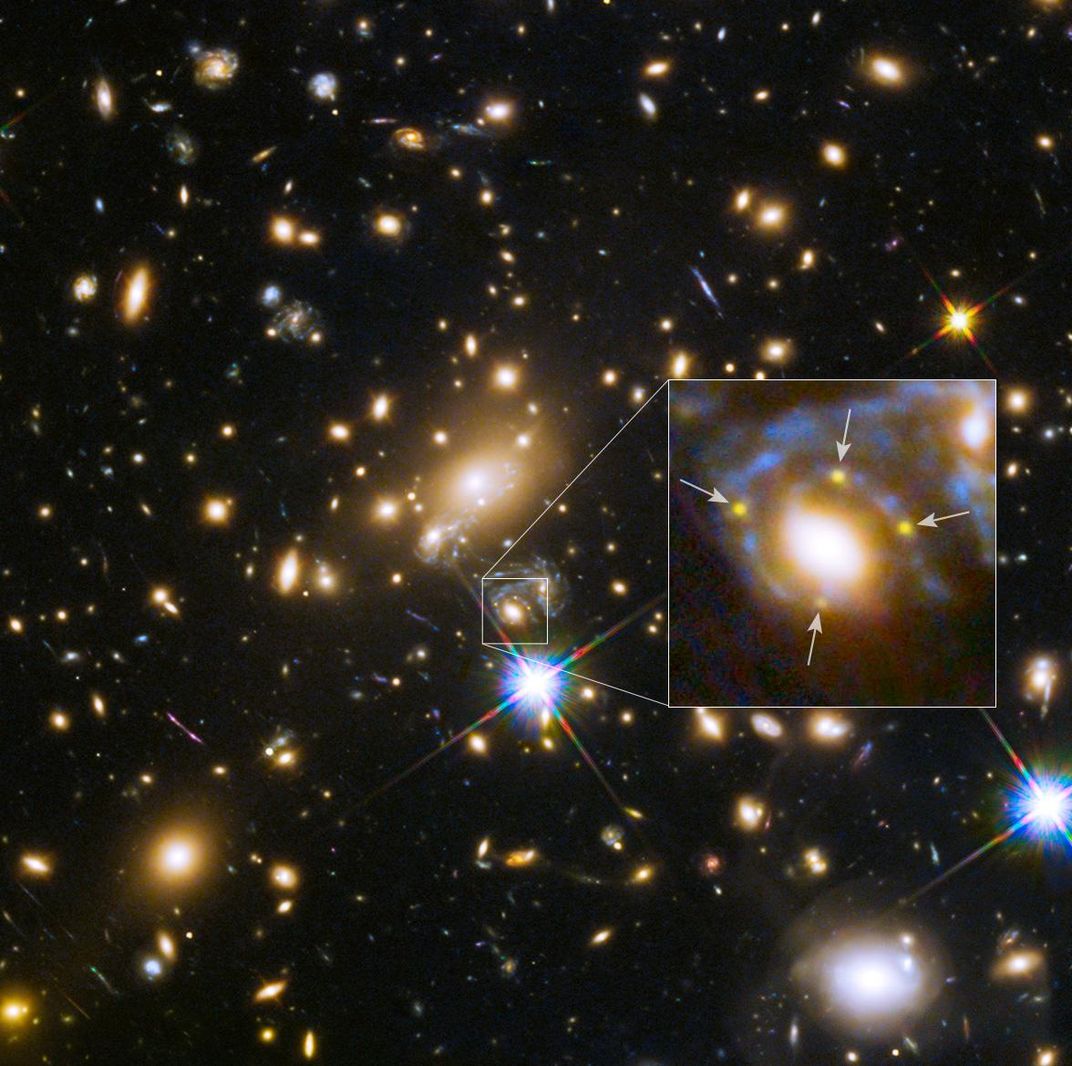
What's better than finding a supernova? Finding four exact copies of that supernova in a single image. Hidden in a Hubble Space Telescope picture of a galaxy cluster, astronomers spotted an elliptical galaxy surrounded by four images of an exploding star. The extremely rare configuration, called an Einstein cross, is an effect of gravitational lensing, when a massive object bends and magnifies the light of something behind it. In this case, both the galaxy and the cluster are acting as lenses, creating this unusual portrait of the supernova going off behind them.
LLAP, Massachusetts
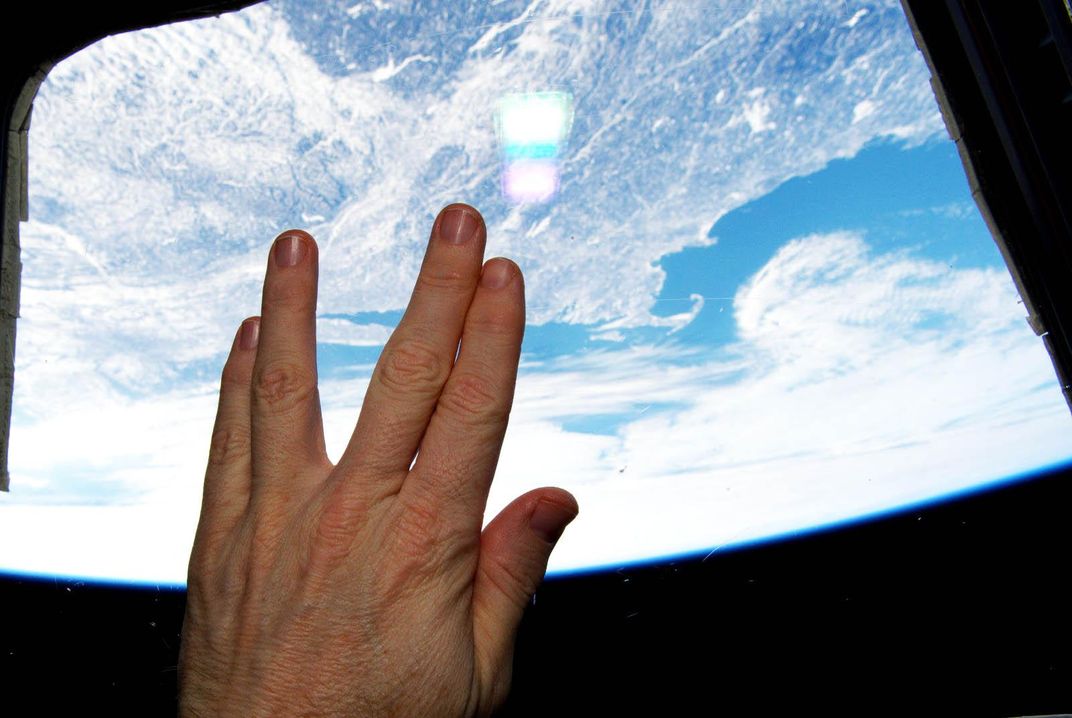
Flying over the Massachusetts coast aboard the ISS, astronaut Terry Virts tweeted this picture of a Vulcan salute in honor of actor Leonard Nimoy, who died on February 27. A Boston native, Nimoy was most famous for portraying Mr. Spock, the half-Vulcan science office of the Starship Enterprise on the original Star Trek TV series. Nimoy introduced the hand gesture—often accompanied by the phrase "live long and prosper—to the show based on a gesture for blessing he had seen during a Jewish ceremony.